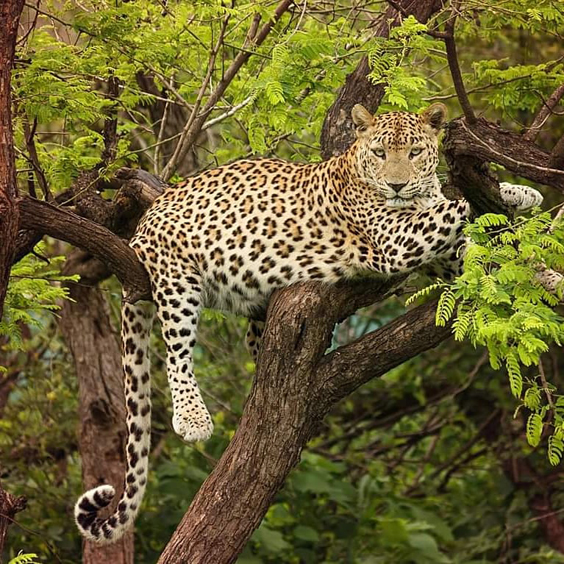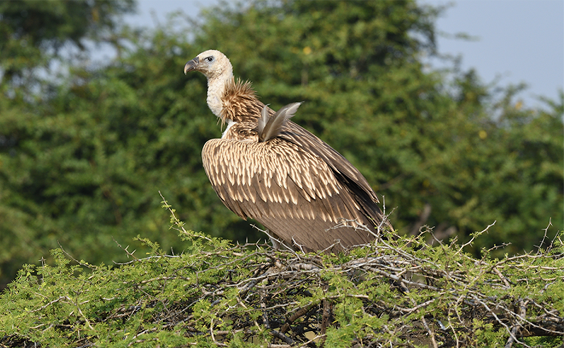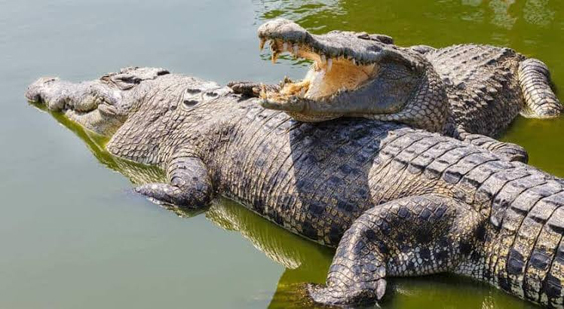Gir National Park - Dwelling Place of Endangered Asiatic Lion in Gujarat.

Gir National Park is the only dwelling place of endangered Asiatic lion spread on 1413 square Kilometres of land in Saurastra region of Gujarat, India. The main motive of Gir National Park was to protect endangered Asiatic lions, but is now home of thousands of aerial and terrestrial animals. The Government notified the large geographical extent of Sasan Gir as wildlife sanctuary on 18th September, 1965 in order to conserve the Asiatic Lion. It covers total area of 1412 square kilometers of which 258 Km forms the core area of the National Park. Over 606 varieties of plants, 36 species of mammals, over 2000 genus of Insects and approximately 300 sorts of birds dwell here. Gir Forest National Park is ideal instance of balanced ecosystem. The diverse and dense vegetation aids in maintaining the ecological balance which results in moderate climate of the region. Gir has been an important home of thousands of wild lives and also contributing immensely for its survival. This wildlife reserve comprises of three reserves that are adjoin and comprises of Nalsarovar Lake that is home to a wide stock of the water birds, Rann-of-Kutch that is renowned for its captivating island of flamingo and Indian wild Ass.
.jpg)
The sanctuary lies in the peninsula of Gujarat that is India's south-western part with terrain that has low hills, is rugged and filled with mixed deciduous trees. Land is rugged with the deepest ravines, rocky hills that are steep, rivers aplenty and those are interspersed with big grassland patches. Major attractions of the place are Asiatic Lions, The bird Sanctuary that houses more than two hundred species of birds, Temple of TulsiShyam and breeding farm of Crocodiles that is nearby Sasan. A combination of crocodiles, Pygmy woodpecker, Chital, Leopard and many more such animals make this place come alive. Taking a safari through the thick, undisturbed forests is a joy - even without the added excitement of spotting lions, other wildlife and myriad bird species. Access to the sanctuary is by safari permit only, bookable in advance online.

The entire forest area of the Gir National Park is dry and deciduous which provides best habitat for Asiatic Lions. As per the new statics of 2015, the entire Saurashtra Region is inhabited by 523 Lions and more than 300 Leopards. Apart from these two animals the park is a home to two different species of Deer. The Sambar is counted largest Indian Deer. The Gir forest is also known for the Chowsingha – the world’s only four horned antelope. The Jackal, striped Hyena and India Fox are some of the smaller carnivores found in Gir Forest.

The exotic flora of Gir National Park gives shelter to more than 425 species of birds and moreover the sanctuary has been declared an important bird area by the Indian Bird Conservation Network. Gir is also habitat of raptors like critically endangered white-backed and long-billed vulture, the Egyptian Vulture, the vulnerable Greater spotted Eagle and the endangered Palla’s Fish Eagle. The crested Serpent Eagle, the Changeable Hawk Eagle and other Birds of prey breed in the forests of Gir. Birds usually can be spotted while driving around Gir are the Asian Paradise Flycatcher, the Red-breasted Flycatcher, the Fantail etc.

Gir National Park is blessed with more than 40 species of reptiles and amphibians. Kamleshwar – a large reservoir in the sanctuary is the best spot where Marsh Crocodile can be seen in large numbers. Park has even many species of snake including King Kobra, the Russell’s viper, Saw-scaled viper and the Krait. The star tortoise and freshwater turtles could also be seen in the sanctuary. It also has a large population of marsh crocodiles and other reptiles which include star tortoise, soft-shelled turtle, monitor lizards and the Indian rock pythons. The crocodile hatchery at Sasan Gir National Park is also an interesting place to see.
Best time to visit Sasan Gir National Park
November to March is considered best time to visit Gir Forest National Park. Winter is in fact a great time when the trip can be planned because the weather has a cool quotient and you have an amazing chance to witness game sightings.
How to reach Gir National Park
The Gir National Park is located at a distance of 65 Kms from Junagarh and 40 Kms from Veraval railway station. Sasan Gir and Ahmedabad are well connected by Road and Rail network. Tourists can easily through 7 hours journey on either private or public means of transportation can cover on road. For tourist seeking for airline services can take the flights to Rajkot and Keshod airport from Mumbai Airport. Tourists from Delhi can opt for flight to Ahmedabad and can proceed on road to reach Gir.
 EN
EN